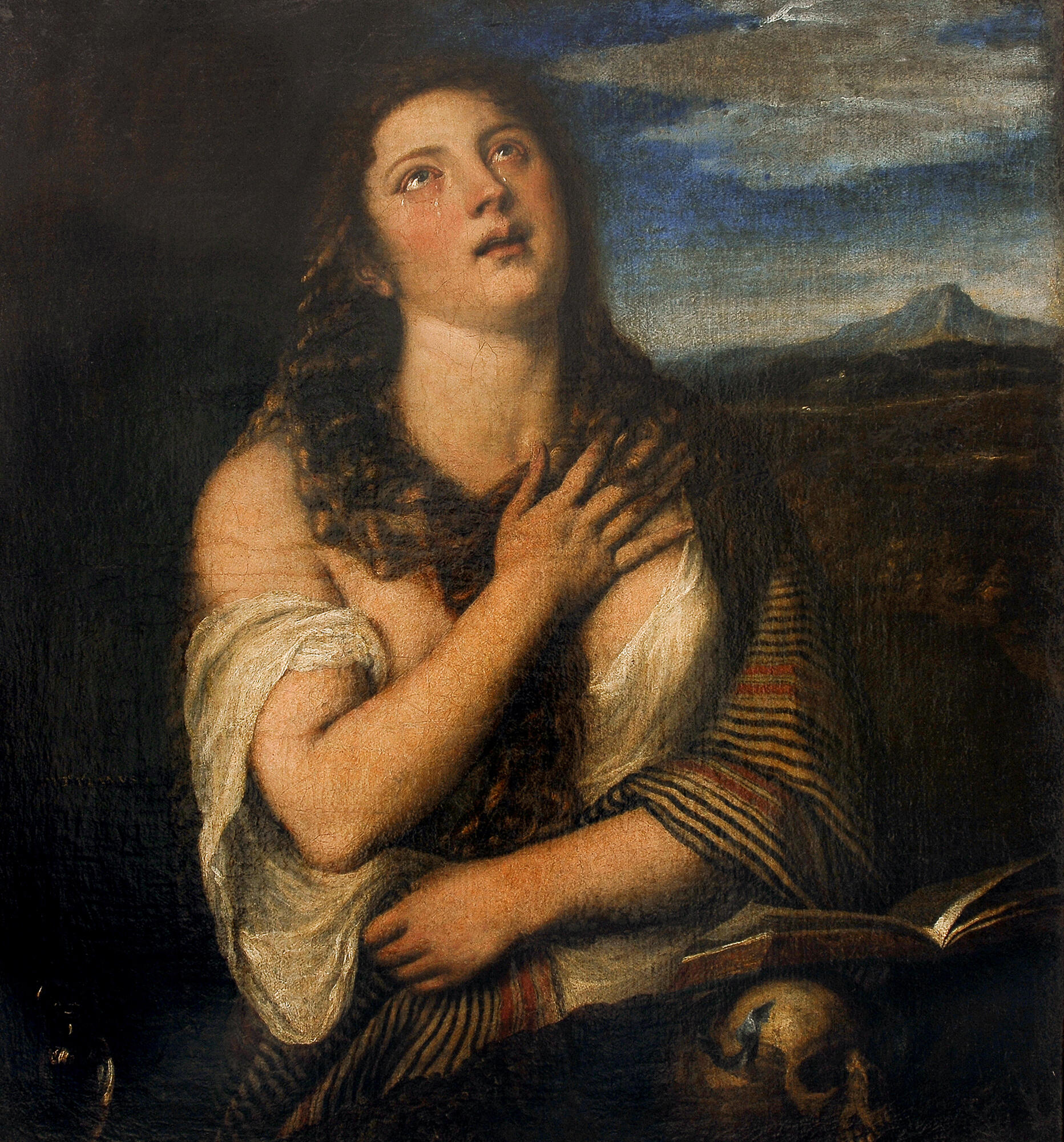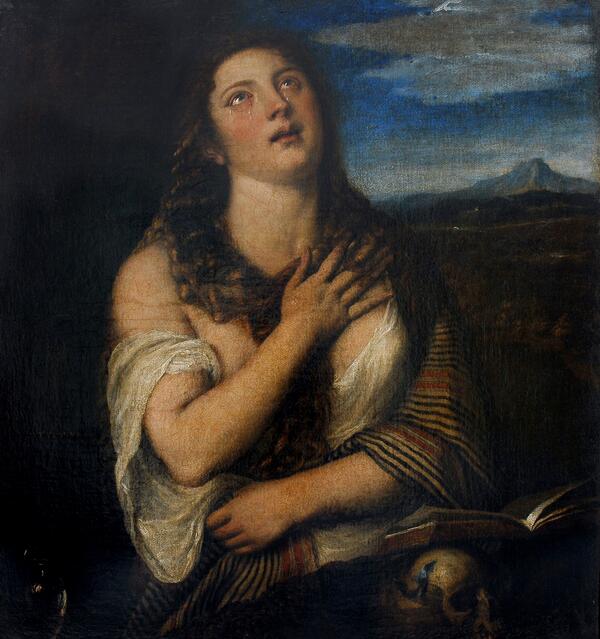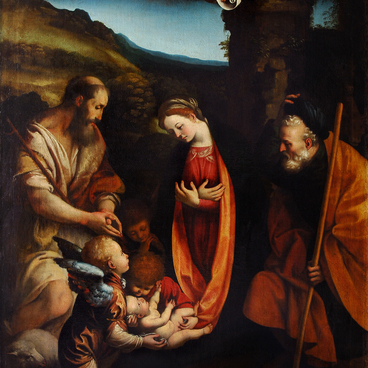Titian painted “The Penitent Magdalene” on commission in the mid-16th century. The painting made him famous while he was still alive. The Venetian Julia Festina posed for the painting. A few years after the painting had been completed, it was seen by a duke from the Gonzaga family. He was the first to order a copy, and subsequently Titian made a number of slightly different versions of the painting. One of the copies of the famous canvas is now in the State Hermitage Museum. Until the artist’s death, this version of the famous work was kept in his house and was later acquired by the patrician Cristoforo Barbarigo, from whose collection the painting eventually came to the Hermitage.
The image of Mary Magdalene gained great popularity in art. In addition to Titian, paintings with the title “The Penitent Magdalene” were also made by Caravaggio, El Greco, and Artemisia Gentileschi. In the Greek Orthodox tradition, Magdalene is revered as an equal-to-the-apostles saint, while in Catholicism she is identified with a number of characters of the Gospels, including a nameless sinner who anointed Jesus’s feet — an image that eventually became common in art.
Titian’s interpretation is characterized by great expressiveness and emotional power, an impression reinforced by the image of Magdalene’s face with visible traces of tears, raised to the somber sky, and a hand pressed zealously to the chest.
The Primorye State Art Gallery houses a copy made by an unknown artist of the Italian school of the 16th century. The signature (TITIAN) is barely visible on the painting. Earlier it was assumed that this work was a copy painted by a student of the Imperial Academy of Arts in the 18th century. However, the staff of the State Hermitage Museum note that the work more likely dates back to the time of Titian himself, which is proved by the peculiar style of canvas-weaving characteristic of the time (in a “herringbone” pattern). Therefore, experts came to the conclusion that the copy of “The Penitent Magdalene” from the gallery’s collection was painted by an unknown artist in the 16th century. Still, the gallery staff have yet to investigate what the inscription TITIAN means and who actually left it.
The image of Mary Magdalene gained great popularity in art. In addition to Titian, paintings with the title “The Penitent Magdalene” were also made by Caravaggio, El Greco, and Artemisia Gentileschi. In the Greek Orthodox tradition, Magdalene is revered as an equal-to-the-apostles saint, while in Catholicism she is identified with a number of characters of the Gospels, including a nameless sinner who anointed Jesus’s feet — an image that eventually became common in art.
Titian’s interpretation is characterized by great expressiveness and emotional power, an impression reinforced by the image of Magdalene’s face with visible traces of tears, raised to the somber sky, and a hand pressed zealously to the chest.
The Primorye State Art Gallery houses a copy made by an unknown artist of the Italian school of the 16th century. The signature (TITIAN) is barely visible on the painting. Earlier it was assumed that this work was a copy painted by a student of the Imperial Academy of Arts in the 18th century. However, the staff of the State Hermitage Museum note that the work more likely dates back to the time of Titian himself, which is proved by the peculiar style of canvas-weaving characteristic of the time (in a “herringbone” pattern). Therefore, experts came to the conclusion that the copy of “The Penitent Magdalene” from the gallery’s collection was painted by an unknown artist in the 16th century. Still, the gallery staff have yet to investigate what the inscription TITIAN means and who actually left it.



